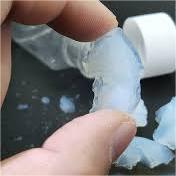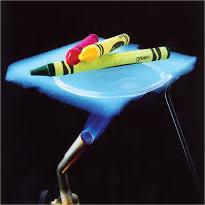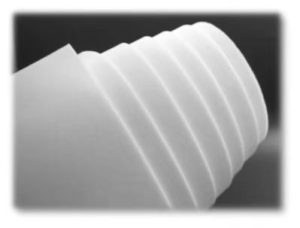Professional industry ceramic supplier, silicon nitride, silicon carbide, aluminum nitride and any other kinds of ceramics.
1. Introduction
Just 24 hours ago, a major materials science conference in Germany highlighted the growing demand for high-performance silicon carbide crucibles in renewable energy and semiconductor manufacturing. Experts emphasized that improper handling remains the leading cause of premature crucible failure—despite silicon carbide’s legendary durability.

If you work with molten metals, glass, or high-temperature lab processes, your silicon carbide crucible is a critical—and expensive—tool. Knowing how to use and care for it properly can save time, money, and even prevent safety hazards. This guide gives you actionable, step-by-step instructions to get the most out of your crucible.
2. Understanding Your Silicon Carbide Crucible
A silicon carbide crucible is made from advanced ceramic materials known for exceptional thermal conductivity, chemical inertness, and resistance to thermal shock. Unlike alumina (Al2O3) or zirconia crucibles, silicon carbide can handle rapid temperature changes and aggressive melts like aluminum, copper, and certain slags.
It’s important not to confuse it with other advanced ceramics. For example, boron carbide vs silicon carbide? Boron carbide is harder but more brittle and less thermally conductive—making it unsuitable for crucibles. Meanwhile, silicon nitride crucibles (from a silicon nitride crucible factory) offer great strength but lower thermal conductivity, so they’re used in different applications.
3. Step-by-Step Guide to Using a Silicon Carbide Crucible
3.1. Pre-Use Inspection
Before first use—or after storage—inspect your silicon carbide crucible for cracks, chips, or glaze defects. Even hairline fractures can lead to catastrophic failure during heating.
- Check the interior for residue or moisture.
- Ensure it sits level in your furnace or kiln.
3.2. Proper Drying and Preheating
Never place a cold or damp crucible directly into a hot furnace. Moisture turns to steam and can cause explosions.

Start by drying at 100–150°C (212–302°F) for 1–2 hours. Then gradually ramp up: 300°C → 600°C → final operating temperature over several hours. This prevents thermal shock—a common killer of even high-quality silicon carbide ceramic columns or bricks.
3.3. Loading and Melting
Fill the crucible no more than 75% full to avoid spillage. Use clean, dry charge materials to prevent chemical reactions that degrade the crucible lining.
Avoid sudden temperature spikes. Maintain a steady ramp rate, especially above 800°C. Silicon carbide performs best between 1,000°C and 1,600°C, depending on grade (e.g., RBSiC silicon carbide tile block variants may differ slightly).
3.4. Handling During Use
Always use tongs designed for high-temp ceramics. Never drop or strike the crucible—silicon carbide is strong but not impact-proof.
Don’t pour molten material too quickly. Turbulence can erode the inner wall over time, especially if you’re melting reactive alloys.
4. Common Problems and Solutions
4.1. Cracking or Spalling
Cause: Rapid heating/cooling or moisture exposure.

Fix: Always follow gradual preheating protocols. Store crucibles in a dry environment.
4.2. Glaze Buildup or Contamination
Cause: Reaction with certain fluxes or metal oxides.
Fix: Clean after each use (see Section 5). Avoid using chlorides or fluorides unless your crucible is specifically rated for them.
4.3. Reduced Lifespan Compared to Expectations
Cause: Using the wrong grade (e.g., standard vs. high-purity silicon carbide) or incompatible melts.
Tip: For ultra-pure applications (like semiconductor work), verify your crucible’s purity level. High-purity silicon nitride powder market standards don’t apply here—but crucible composition does matter.
5. Cleaning and Storage
Let the crucible cool naturally to below 200°C before cleaning. Never quench in water.
Remove residue with a soft brush or non-metallic scraper. For stubborn deposits, heat to 600°C in air to oxidize organics, then brush off ash.
Store in a dry, dust-free cabinet. Stack carefully—don’t place heavy items like silicon carbide ceramic tiles or silicon carbide brick on top.
6. Compatibility with Other Advanced Ceramics
While your silicon carbide crucible excels in many settings, it’s not universal. For example:
- Silicon nitride rings or custom silicon nitride heat shields are better for mechanical load-bearing at high temps.
- Boron nitride is preferred for non-wetting applications (e.g., molten rare earths).
- Don’t confuse your crucible with silicon carbide ceramic dinnerware (like silicon carbide baking ceramic dish or silicon carbide ceramic plates for dinner)—those are for kitchens, not foundries!
Also, components like silicon carbide burner nozzles, silicon carbide tubes, or silicon carbide thermocouple protection tubes share material properties but serve different functions. Always match the component to the task.
7. Conclusion
A silicon carbide crucible is a powerhouse in high-temperature processing—but only if treated with respect. By following proper preheating, handling, and cleaning routines, you’ll extend its life, ensure consistent results, and avoid costly downtime. Whether you’re in metallurgy, glassmaking, or advanced ceramics manufacturing, these steps are your best defense against premature failure.
Our Website founded on October 17, 2012, is a high-tech enterprise committed to the research and development, production, processing, sales and technical services of ceramic relative materials such as How. Our products includes but not limited to Boron Carbide Ceramic Products, Boron Nitride Ceramic Products, Silicon Carbide Ceramic Products, Silicon Nitride Ceramic Products, Zirconium Dioxide Ceramic Products, etc. If you are interested, please feel free to contact us.






